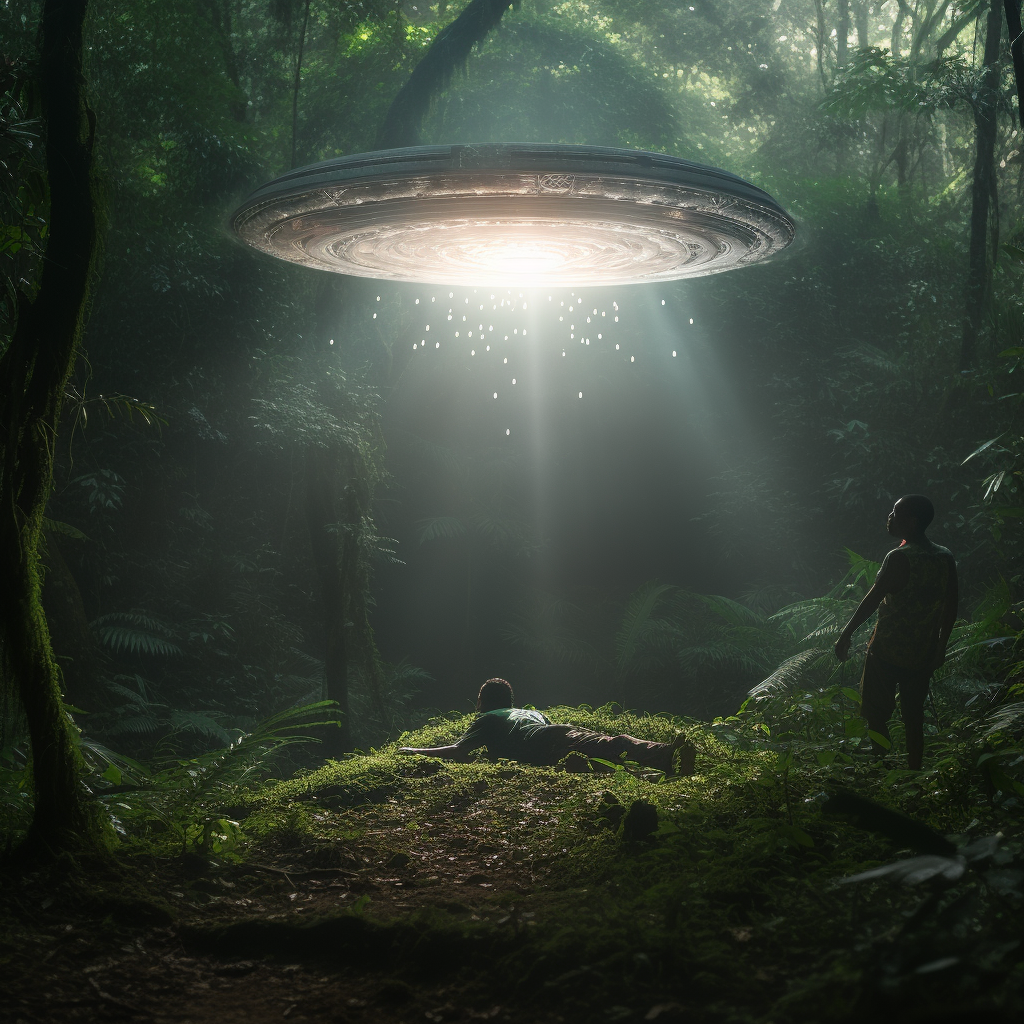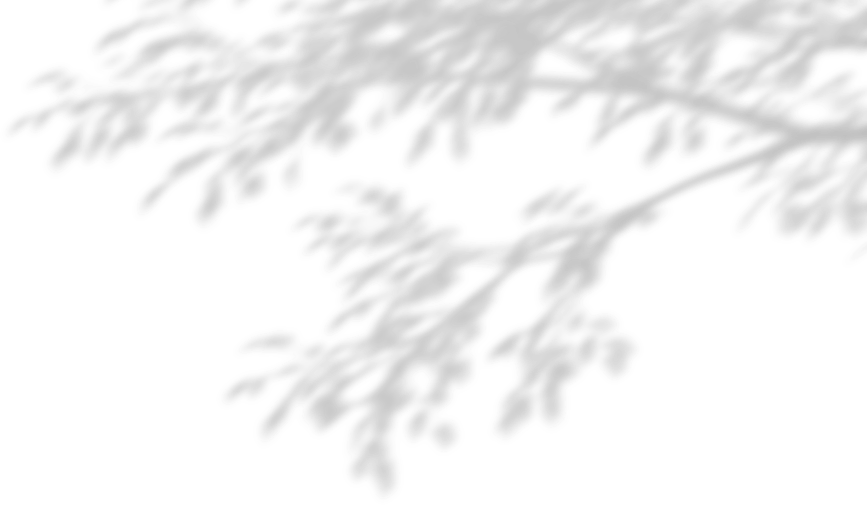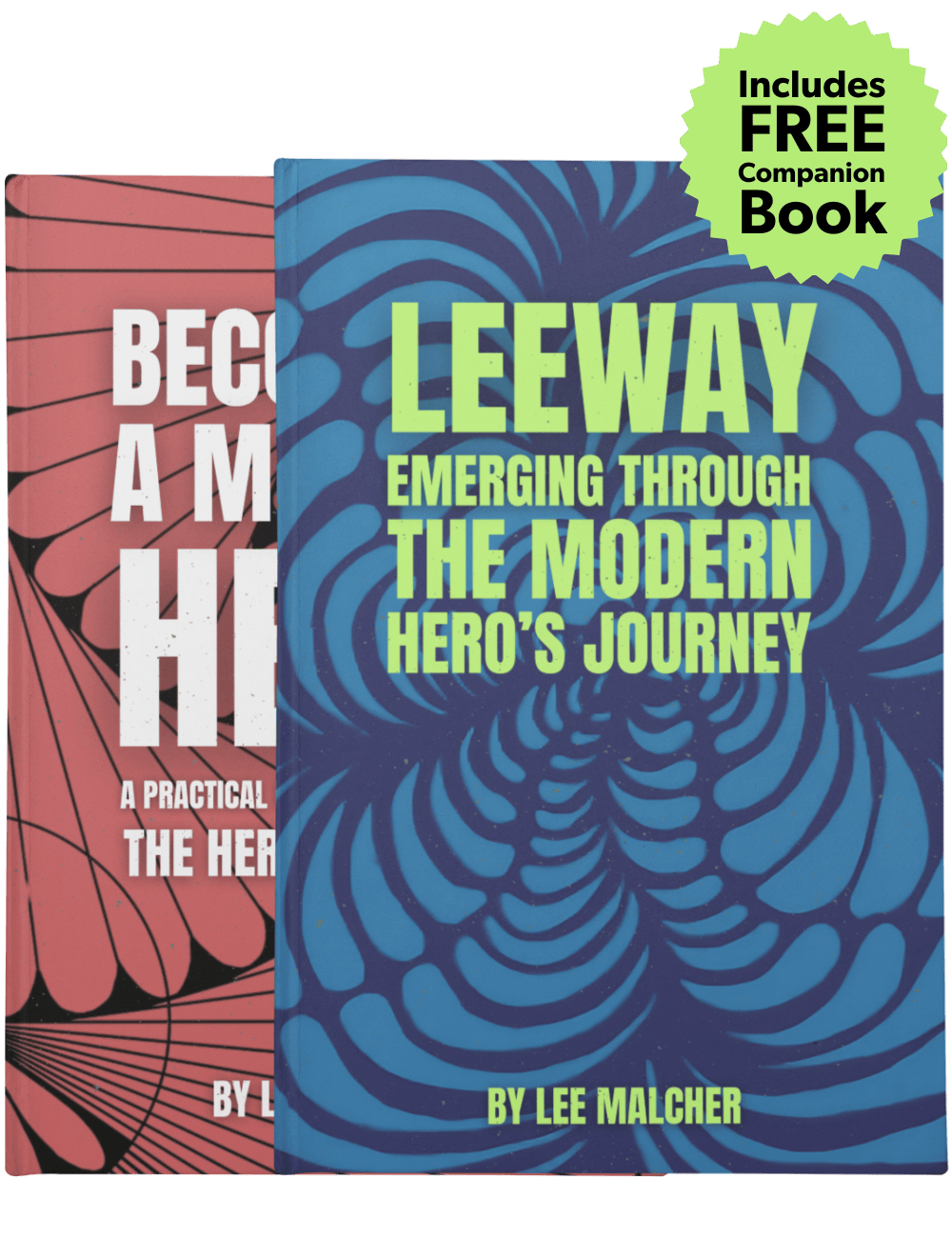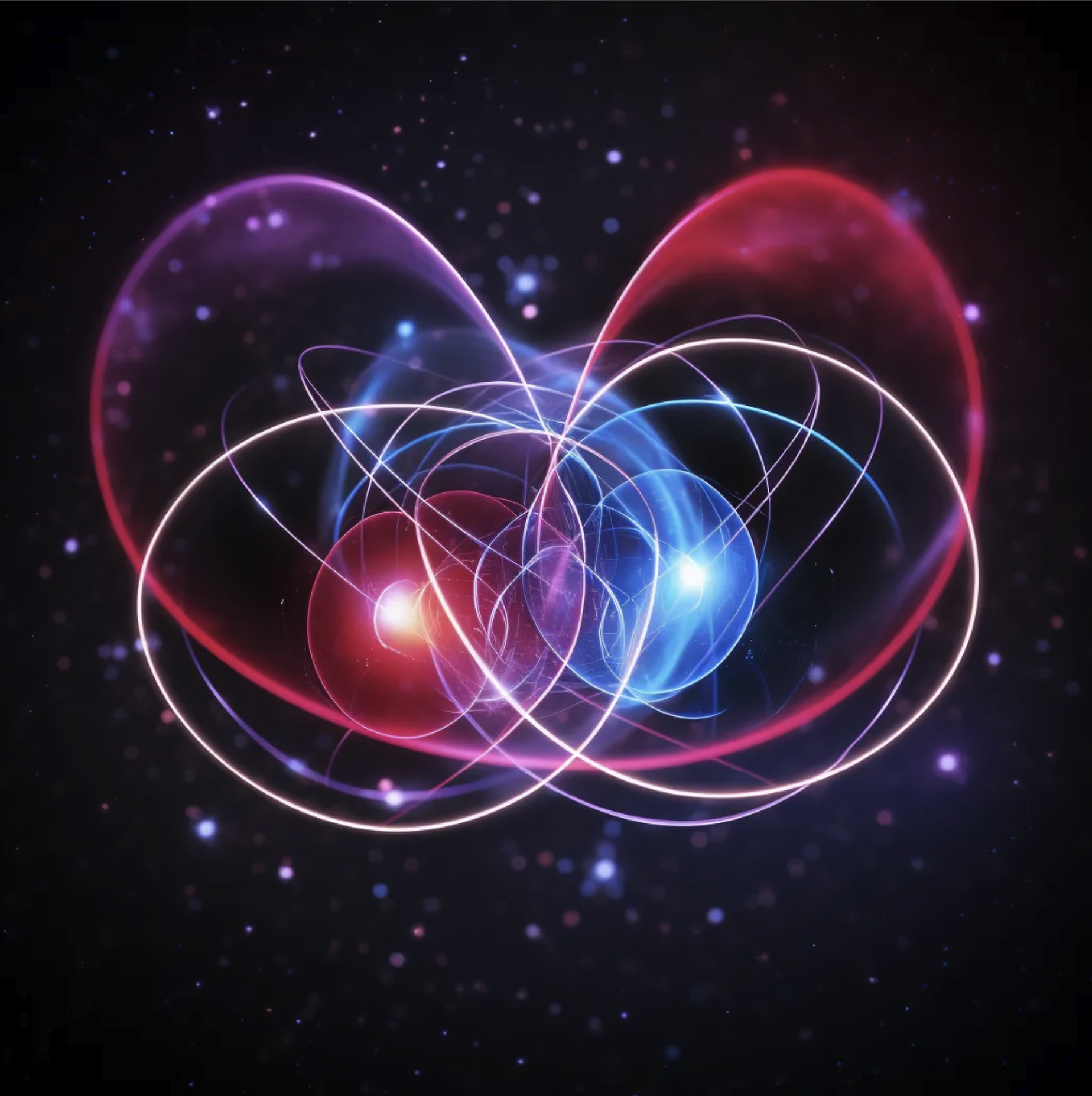Introduction: An Unearthly Encounter During a Spiritual Journey
Imagine this: you’re deep into an Ayahuasca ceremony in the jungle, transcending the realms of the ordinary, and just when you think things can’t get more surreal, a UFO appears. No, you didn’t misread that. Amidst a landscape already buzzing with life-altering insights and grounding icaros sung by our shaman, this unidentified flying object decided to make its entrance. Our shaman, in her unparalleled wisdom, paused her incantations to honor the cosmic guest. And while I was too absorbed in my own introspective journey to be overly concerned with extraterrestrial visitors, the interruption was so striking that a couple of my fellow journeyers also paused to acknowledge the strange sight hovering amongst the treetops. No, this isn’t science fiction; it’s an uncanny episode from my own life journey.
So, what does one do when faced with an experience that defies both logic and the laws of physics? For me, the answer lay in the depth psychology of Carl Jung. His theories have long been a touchstone in my life, guiding me through existential quandaries, both trivial and monumental. Especially resonant was his exploration of UFO phenomena as projections from the human psyche, beckoning us toward greater self-awareness. Experiences like these aren’t merely anomalies or tabloid fodder; they are invitations to dive deeper, to question the paradigms that shape our understanding of reality, and to engage in the ultimate hero’s journey: the exploration of the Self.
So, let’s embark on this intellectual expedition together. We’ll delve into my encounter with the unknown, framed by Jungian perspectives, and examine what it reveals about our collective quest for meaning, growth, and the unfolding of our own unique hero’s journey
1. Historical Context & Archetypes
If you’re intrigued by my uncanny experience, you’re not alone. Humanity has been captivated by mysterious phenomena for as long as stories have been told around campfires. From shadowy figures lurking in woods, whispered to be fairies or goblins, to witches who were believed to cavort with the devil, our history is replete with accounts that stretch the limits of logical explanation. Remember the Salem witch trials? Individuals were so convinced of the existence of witches that it led to a deadly wave of hysteria. Or what about the Celtic folklore filled with mischievous fairies and daunting banshees? What if these might not just be stories? What if they’re mirrors reflecting our collective hopes, fears, and unanswered questions?
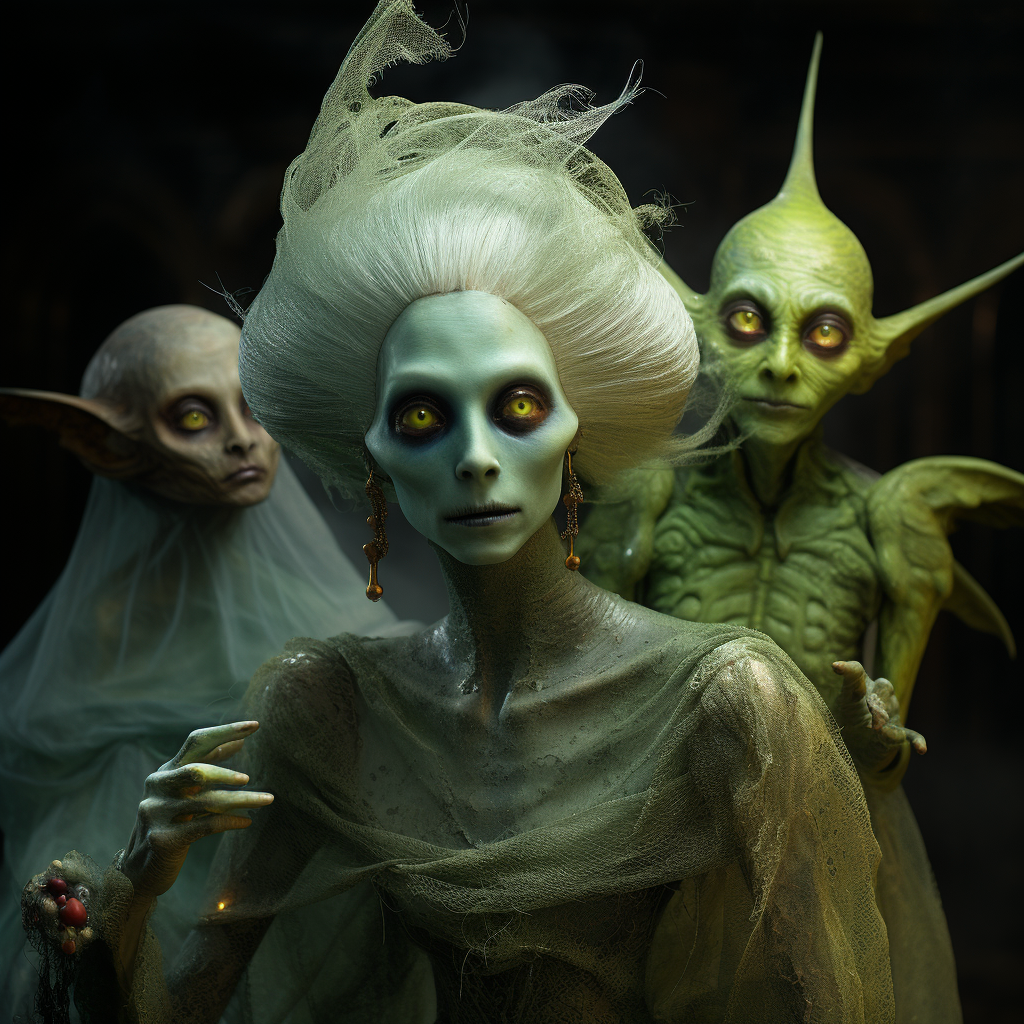
So, you might be wondering: are these phenomena just figments of overactive imaginations? Or could they represent something more profound — something that delves into the roots of our collective psyche? Jung would likely argue for the latter. According to his theories, such phenomena aren’t mere oddities to be dismissed. Rather, they may be manifestations of our collective unconscious, symbols that beckon us to look inward as much as outward. Imagine these age-old tales and my UFO sighting as post-it notes from our subconscious, reminding us, in the physical world, to examine what these phenomena mean for our collective journey of understanding.
Could these myths and visions act like a societal mirror, reflecting back to us our collective inner workings? These phenomena might not just be anomalies; they could be catalysts for transformation — both on a personal and collective scale. They push us to question and often force us to confront fears we didn’t even realize we had. Rather than mere distractions, these curious events could be guiding us toward a more profound understanding of ourselves and the world around us.
Now that we’ve recognized that my experience, and perhaps yours in a different setting, isn’t an isolated case but part of a bigger picture, we’re ready to delve into the depths of Jungian theory. Trust me, things are about to get even more intriguing as we put on our exploratory caps and set sail on an intellectual expedition to explore the great unknown.
2. Setting the Stage with Carl Jung
If Ayahuasca is a vibrant paintbrush that reveals previously unseen colors on the canvas of reality, then Carl Jung’s theories are like the palette that helps me make sense of these hues. If you’re not familiar with Jung, he’s was a Swiss psychiatrist who founded analytical psychology, offering theories that can act as interpretive tools for personal growth as well as experiences that defy conventional wisdom, such as my own.
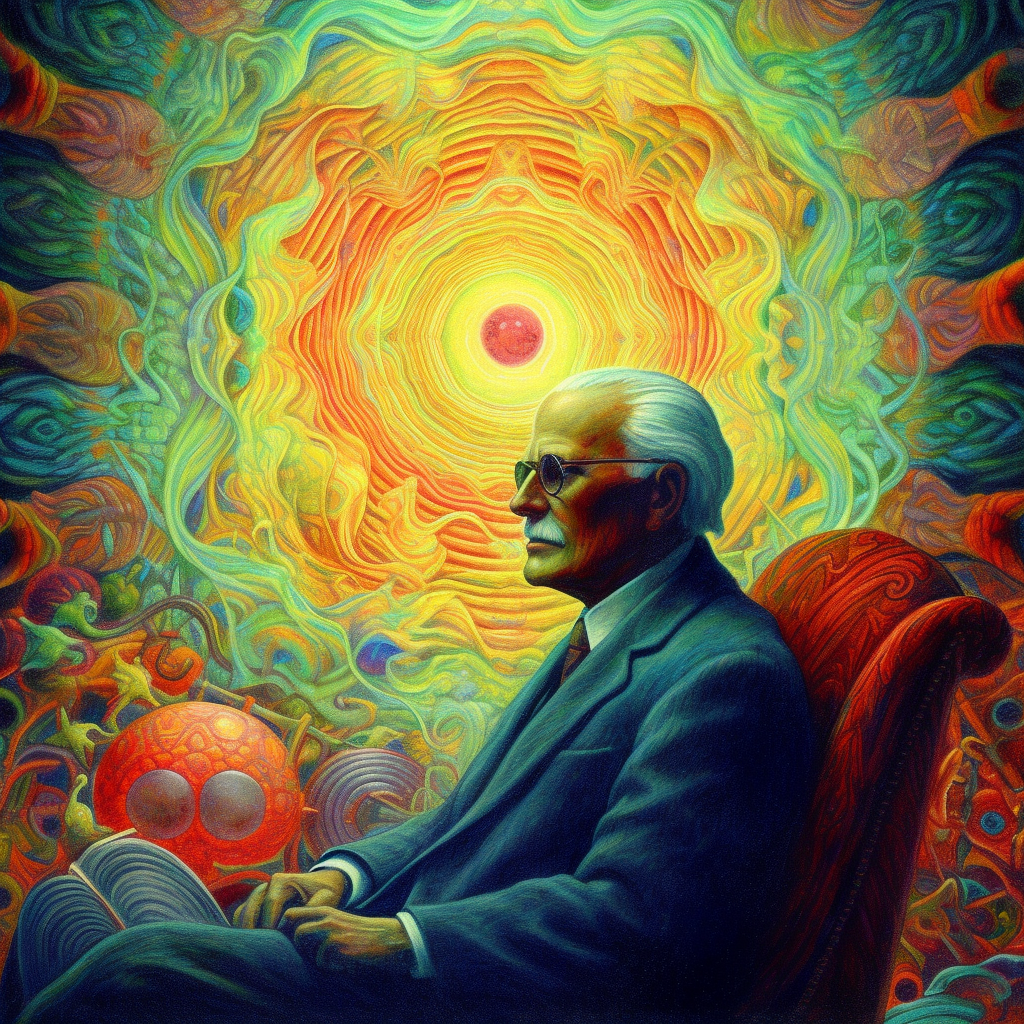
He brought into play ideas like the “collective unconscious,” a reservoir of shared human experiences and archetypes. Think of archetypes as universally understood symbols or terms, a common language for the human experience. He also talked about the “shadow,” which is essentially a storehouse for parts of ourselves we don’t necessarily want to acknowledge but are undeniably a part of us. And then there’s “individuation,” the lifelong process of becoming who you’re truly meant to be. Could these Jungian theories serve as a map or guide for navigating the uncharted waters I was about to plunge into?
Breaking Down Jung’s Foundational Concepts
Here’s a quick rundown Jungian terminology that will serve as an interpretive compass for the journey ahead
- Collective Unconscious: Imagine an ancestral memory bank where universal symbols, known as archetypes, reside. Could the visions and emotions I experienced during my Ayahuasca ceremony have originated from this shared human reservoir?
- Archetypes: These are universal symbols and themes like the Hero, the Mother, and the Wise Old Man that frequently surface in myths, stories, and transformative experiences.
- Shadow: This is the darker part of ourselves that we often suppress or deny. It’s a repository for traits or tendencies we’d rather not acknowledge, and it became a point of confrontation for me during my Ayahuasca journey.
- Ego: This represents your conscious mind, essential for day-to-day interactions but also a barrier to deeper self-exploration.
- Self: In Jungian psychology, the Self is the end goal of individuation — a fully integrated self.
- Anima/Animus: These are the feminine and masculine aspects of the psyche, respectively, which often make appearances during intense self-exploration.
- Individuation: This is the lifelong journey toward becoming the most authentic version of yourself.
By understanding these terms, we gain a nuanced language for the often word-defying experiences we’re about to explore.
What makes Jung’s theories particularly intriguing when talking about Ayahuasca experiences is their shared essence of diving deep into the human psyche. Ayahuasca is known to plunge its partakers into realms of the unconscious, revealing symbols, insights, or repressed thoughts, much like what Jung aimed to do through psychotherapy.
Understanding Jung helps to provide not just a language but also a framework for unpacking such extraordinary experiences. It allows us to consider them not as mere hallucinations or anomalies, but as real, significant interactions with the deeper layers of our being. It’s through this lens that we’ll explore the Ayahuasca ceremony and the mysterious UFO sighting further, examining how they might be interconnected in the tapestry of collective consciousness.”
3. The Shaman as the Anima
As I reflect on the transformative journey I took under the guidance of our shaman, a multi-dimensional perspective comes to life. What I encountered through her guidance was nothing short of a flesh-and-blood representation of what Jung would suggest are various archetypal energies: The Anima, the Wise Mother, and even a little bit of the Trickster, tasked with leading me to darker parts of my unconscious ‘self’ acting as guide, a friend and even a foe.

Her genuine presence throughout the ceremony held immense significance. When I voiced my inner intention: “Show me what I need to know and do,” it felt like she was the Wise Old Woman archetype, guiding us to center our minds and focus on the path ahead. She enacted the Mentor role in the Hero’s Journey, offering me a psychological threshold to cross, a point of no return. Her words, “Look at the door you’ve walked through. The world you’ve left behind will be different when you walk back out of it,” rang with the weight of impending transformation, much like a harbinger in Joseph Campbell’s Hero’s Journey framework.
As I struggled with overwhelming sensations and emotions during the ritual, pulling my hair in despair, she offered neither clichéd reassurance nor immediate rescue. Her response was compassionate but firm: “I understand, especially when you don’t know when it will end, huh?” This moment crystallized her role as a bridge between the conscious and unconscious realms. In refusing to save me, she honored the Jungian idea that the inner journey towards individuation must be undertaken alone. She acted as a grounding force, reminding me that while she can guide, ultimately the journey is mine alone, reinforcing Campbell’s idea that the Hero must confront his dragons alone in the cave, albeit with the wisdom he has gained from his mentors.
The Shaman’s role reached a surreal crescendo when she abruptly paused her icaros to acknowledge a UFO. This moment felt like an interruption yet an affirmation, as if the collective unconscious had materialized to validate our quest. And then, as I returned to reality, she metamorphosed before my eyes into what seemed like Gaia, embodying the spiritual essence that had led me throughout this odyssey.
In the aftermath, her persona shifted to something almost naive, a stark contrast to the sagely figure she’d been. In dismissing her individual self to emphasize her alignment with something infinitely vast, she personified Jung’s ideal of individuation: a balanced, integrated self yet part of a larger whole.
The Shaman didn’t just guide me; she was the living embodiment of various archetypal energies, serving as my Wise Old Woman, my Anima, and even my Trickster. Through her, I faced my shadows, grappled with my inner turmoil, and found solace and insight, helping me manifest the unconscious elements I needed to confront. It was precisely the balance between her carefree energy and deep-rooted wisdom that offered the equilibrium I needed on this psychological and spiritual pilgrimage.
4. The Fuzzy Gray Cube
Ever since I can remember, whenever I close my eyes, this grey, fuzzy cube would appear. Over time, it became such a routine part of my internal landscape that I hardly gave it a second thought. That is, until I participated in an Ayahuasca ceremony. During this profound journey, that same cube underwent a transformation that left me bewildered but also marvelously intrigued. It was no longer static and dormant; it pulsed with vibrant colors, radiating a multitude of geometric shapes and patterns.
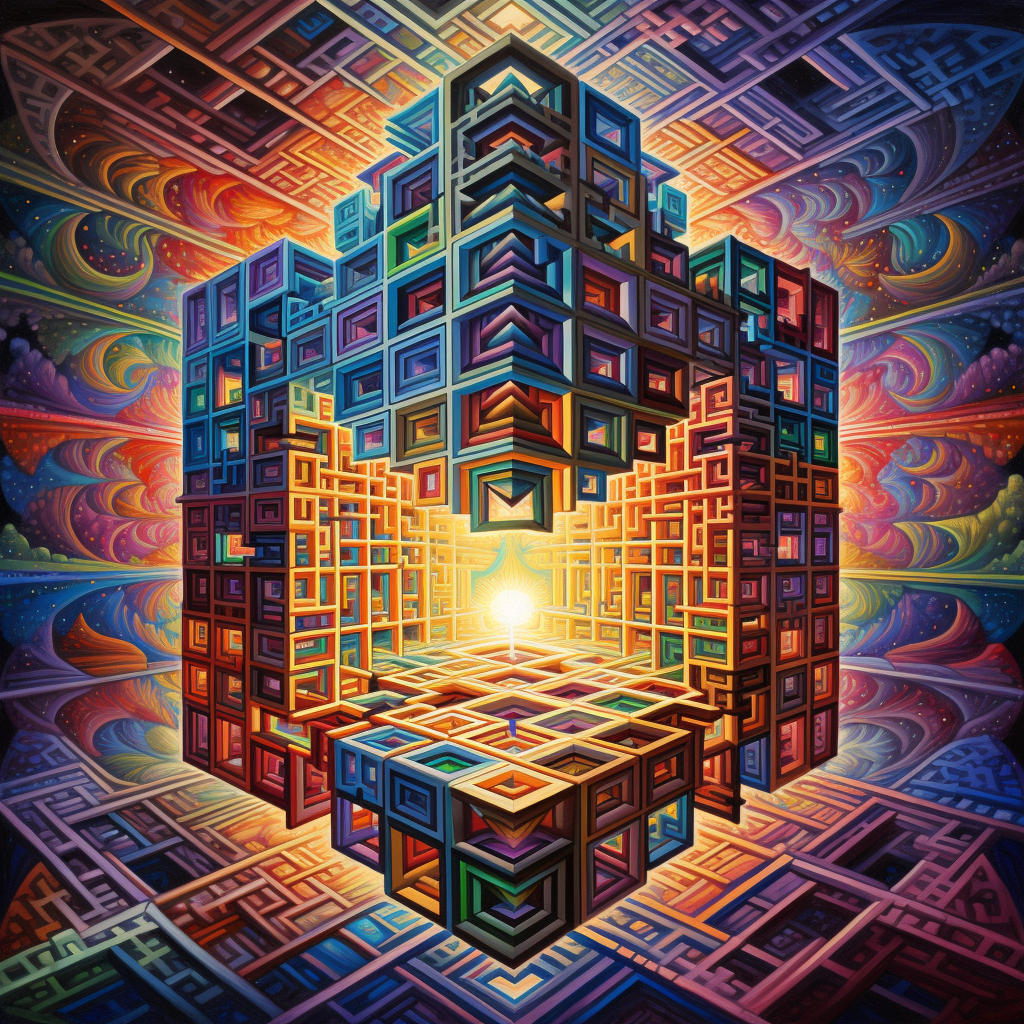
In Jungian terms, this cube could be considered an ‘archetype,’ a universal symbol deeply embedded in my collective unconscious. For years, it seemed to just sit there, static, as if waiting for the right moment to reveal its full potential. And it seems that moment finally arrived. Its metamorphosis during the ceremony could signify a critical point in my process of individuation, the Jungian concept describing the pathway to becoming your true self. Could this cube, in its new vibrant form, be inviting me to explore neglected aspects of myself?
As the cube came alive and seemed to embody the essence of Mother Ayahuasca herself, it dawned on me: I might be experiencing the union of opposites, an essential component of Jungian psychology. By this, I mean that the cube could symbolize duality — conscious vs. unconscious, masculine vs. feminine — and my acknowledging its feminine energy may hint at a need for greater balance within myself.
Now, let’s pivot to the Hero’s Journey. The transformation of the cube struck me as a symbolic ‘Crossing the First Threshold.’ It’s like my Hero’s Journey had catapulted me into a new chapter, compelling me to confront complexities that I’d only brushed against before. The cube’s metamorphosis serves as a potent milestone on this journey, challenging me to evolve and integrate new dimensions of my personality.
So, what’s the takeaway from this meaning? Embrace it. If this cube and its transformation are an ‘invitation,’ my acceptance needs to be affirmative and wholehearted. That means exploring the depths of my psyche, integrating the neglected aspects of myself, and opening the door to a more authentic and holistic way of being. Am I entirely ready for what lies ahead? Probably not, but the most meaningful adventures rarely begin with complete readiness, don’t they?
5. Tapping into the One-ness of the Collective Consciousness
Slipping into an “all-knowing” state, was arguably the most intense part of my experience. It felt like I had transcending intellectual awareness and connected to the very essence of existence, the very fabric of the cosmos. It was overwhelming, a sensory overload that felt like a sudden, all-consuming download and understanding that connected me to everything and everyone — past, present, and future, everywhere, all at once.
In Jungian terms, it was like plunging into the collective unconscious, the reservoir of shared human experiences and wisdom that transcends the individual ego, though I’d suggest it the collective unconscious is more than just humanity! Jung would say that my experience resembled what he calls the integration with the Self, the sum total of the conscious and unconscious mind, a unity transcending our individual ego. During this “one-ness” and “all-knowing” stage, it felt like I’d tapped into something that felt universal, almost as if the boundaries between self and the ‘other’ dissolved for a moment.

This illuminating episode resembled what’s commonly termed a “peak experience.” Such instances are highlighted by Carl Jung, Joseph Campbell, and even Abraham Maslow as transformative catalysts on the path toward self-realization and personal growth. If you’ve had even a glimpse of this unifying Self, then you’ve touched the profound understanding and satisfaction that comes from orienting your life around individuation or the Hero’s Journey.
Interestingly, this sensation of unity brought me to a newfound appreciation for the ego. Far from demonizing it, I recognized its essential role as a grounding force. In Jungian terms, the ego isn’t an element to eradicate but rather to harmonize within the broader psyche. A Taoist perspective resonates here too — each element, like Yin and Yang, holds its place for equilibrium. Without the ego, we risk becoming unmoored, adrift in an endless sea of consciousness, and disconnected from the earthly journey we’re each here to undertake.
While it’s tempting to classify these moments as purely ‘otherworldly,’ they often deliver profound inner messages. Such experiences force us to reassess the fabric of our perceptions and beliefs. For me, this momentary glimpse of oneness provided a tangible goal and an inner, intuitive motivation for growth that’s too compelling to ignore.
So here’s what I’ve come to realize: the key to personal growth and self-realization isn’t in eliminating parts of ourselves but in integrating them meaningfully into our lives. Whether embracing the all-knowing wisdom of the collective unconscious or recognizing the grounding force of the ego, each element serves as a milestone on the journey toward becoming the person you’re inherently meant to be.
6. The UFO: An External Manifestation of Internal Transformation?
There was a moment in my ayahuasca journey where a UFO was apparently hovering above us all. At this point, you might expect me to be utterly transfixed, but the truth is, what I was experiencing in my minds eye felt 100 times more powerful than a UFO hovering directly above our heads. That’s quite the statement, right?

In fact, the ship could’ve landed next to us, little green men could’ve stepped out to greet us, and I still would’ve been onto something far more profound. I was experiencing a oneness, a connection to what I can only describe as the “source,” that filled me with sensations — body and skull vibrations, electrical auditory warping, and vivid, colorful geometric patterns overwhelming my senses. And here’s where things take an intriguing turn: I actually felt so connected that I believed I’d most likely summoned the UFO myself. I felt not just a connection but a sense of control over how they behaved!
Let’s break down my experience:
Personal or Collective Unconcious Manifestations?
Jung considers supernatural phenomena events not just as isolated incidents but as manifestations of the personal and collective unconscious. In Jung’s perspective, the surge in UFO sightings like the one I experienced could reflect a societal or collective psychological condition. Essentially, he’s suggesting that UFOs serve as symbols that emerge from the personal and collective shadows of our unconscious to fulfill some sort of psychological need — be it a warning, a guiding symbol, or a manifestation of some deep-rooted fears or hopes.
This invites us to explore a deeper facet of the Shadow — an unintegrated part of our psyche that not only houses unfulfilled desires and fears but also serves as a catalyst for individuation. When one integrates these shadow elements, it leads to a fuller, more harmonious self, according to Jung. So, in this context, could my UFO experience be urging me towards such integration?
On a personal level, Jung’s view helped me think about UFOs as a kind of “modern mythology,” an outward representation of my inner psychological realities. Jung often referred to the unconscious part of ourselves, as the Shadow; the shadow is not integrated into our conscious personality. In many ways, my UFO experience may have acted as an externalization of these unconscious elements, drawing my attention to the shadow parts of myself I’ve not yet fully understood or accepted. This makes me ponder — what role does modern mythology, say, UFOs, occupy that was once filled by dragons or celestial beings in ancient times?
Did this UFO experience symbolize something unfulfilled or unresolved in my psyche? Are they archetypes I’ve manifested, serving as a path to explore darker, shadow aspects of myself I haven’t fully grasped? It also allowed me to wonder about aspects of my life that feel ‘alien’ and require introspection.
In this case though, the sighting wasn’t just personal; the Shaman and other participants also bore witness. This offers an additional, complicated layer of interpretation — Jung’s notion of the collective unconscious. Unlike a random crowd, a shamanic ceremony is a specific kind of collective, often sharing emotional or psychological aims. Could this focused intent be the conduit through which the UFO archetype materialized? How does this modify or intensify Jung’s standard concept of the collective unconscious?
It’s worth considering counter perspectives at this juncture. For instance, a rationalist might dismiss this event as mere coincidence or even groupthink, but doing so would miss the opportunity to delve into the emotional and psychological complexities that the UFO sighting has illuminated.
Jung’s book “Flying Saucers: A Modern Myth of Things Seen in the Skies” offers a template to examine these events. Jung suggests that such phenomena might well be collective manifestations. If so, the fact that we all experienced this UFO sighting could imply that it’s not merely a projection of my personal shadow, but rather, it leans toward being a collective symbol — representing shared hopes, fears, or perhaps even prophecies.
In essence, this UFO experience raises questions not just for me, but for society at large. Are UFO sightings merely individual psychological phenomena, or do they tap into a more expansive, collective unconscious? How does the focused intent of a specific community, like a shamanic ceremony, shape these collective manifestations?
Disinterest in the UFO
My disinterest in the UFO, despite its sensational appearance, could be seen as my psyche prioritizing the “inner world” over the “outer world” at that moment. In Jungian terms, this could be an inward projection of the Self archetype. The Self, in Jung’s framework, represents the unification of the conscious and unconscious mind. It seems like what I wase experiencing was a profound sense of unity with my inner Self, which rendered the external world — no matter how extraordinary — less urgent or relevant.
This is one of the most powerful interpretations and lessons from my experience. Ultimately, it’s solidifying the idea that only I am responsibile for me feelings and being. It helped me take accountibility and responsibility of myself, and prevents victimhood. Reinforcing, our perception is our reality, and once we develop and break free from the parental and cultural programming and conditioning, only we are responsible for how we perception of our reality. It’s a lonely, thought but offset with that connection to the source, one-ness that still resonates with me.
Feeling of “Oneness” and Connection to the “Source”
In Jung’s model, this sense of one-ness could be interpreted as a momentary realization of the Self, which is the archetype of wholeness and the regulator of the psyche. This is akin to a union with what Jung called the “collective unconscious” — a reservoir of shared human experiences and archetypes. Being in touch with this “source” seemed like tapping into this collective unconscious, harmonizing my individual psyche with universal human experiences.
My Sensory Overwhelm
The body and skull vibrations, electrical auditory warping, and colorful geometric patterns could be what Jung describes as synchronistic phenomena. These overwhelming sensory experiences could be signs, symbols, or manifestations from the collective unconscious meant to guide or inform me.
My Feeling of Power and Control Over the UFO
This element was intriguing. The sensation that I could control the UFO might be a manifestation of my anima, the archetype that represents the female aspects within men, projecting a sense of mastery or control over the unknown. Jung would probably caution that this feeling, while empowering, should be reflected upon carefully. My ego might like to believe it has more control than it actually does. This could be a call for humility and a reminder that the process of individuation is ongoing.
Now, putting myself into Joseph Campbells Hero’s journey framework, my UFO experience felt like meeting the “oracle”. This was a symbolic intervention that left me puzzled, yet offered an opportunity for deeper understanding. It disrupted my ordinary world and invited me into a realm of psychological exploration — a call to adventure, if you will.
7. Ego Death & Surrender
As my Ayahuasca visions shifted from calming geometry to a terrifying spiral descending into the void, it felt as if I was plunged into a face-to-face encounter with my Shadow. In Jungian psychology, confronting the Shadow is a necessary step for individuation, for becoming whole. And boy, was it a confrontation. Visions overwhelmed me — vivid, heart-wrenching scenes featuring my ex-partner in turmoil, followed by an eerie withdrawal of her presence from my consciousness. It was as if the universe was saying, “Enough. Focus on yourself now.” Jung talks about how we often project our inner needs onto external relationships, failing to realize that the journey is an internal one. My experience beautifully captures that moment of epiphany, where I recognize that the pressing matter is not her but myself. What I initially saw as an emotional anchor in her started to dissolve, urging me to look inward, into my own abyss.
But I resisted. My plea to the shaman was a cry for grounding, “I didn’t want this” and “I want to go back. It is too much.” The shaman’s response embodied what Jung would refer to as the Wise Old Woman archetype — a guide, offering not rescue, but the wisdom to navigate my inner labyrinth myself.
Now let’s talk about that mantra, “Ignorance is bliss.” The Siren’s song of denial, tempting me away from the painful knowledge I was gaining. The moment echoed Jung’s belief that enlightenment is not a blissful, straightforward path; it’s complex, it’s terrifying, and often something we might not feel ready for. Yet, the storm inside me continued, as fear for my younger brother, Jake, emerged. This was pure archetype — the Protector, perhaps a manifestation of the Self, urging me to shield him from the same transformative pain I was going through.
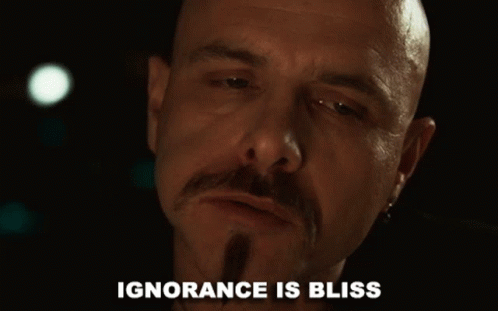
But despite the terror and confusion, I finally did it — I surrendered. Wrapped in fetal and worship poses, evoking a previous vision in a sweat lodge, I ceased to fight against the tide of profound spiritual force pulling me inward. Jung would likely see this as an important moment of reconciling the Ego and the Self, a point of deep individuation, where I let go of my fears and trusted in something far greater than myself.
Yet even in this transformative spiral, my brother Luke remained, a stable archetypal presence, a guide in the maze of my unfolding psyche. It was in that terrifying emptiness, a void beyond all comprehension, that I felt a profound connection with him. And with that beacon of love and gratitude, I felt the courage to fully surrender to “her,” to Mother Ayahuasca. In Jungian terms, it was a dance with the Anima, the feminine within, which nudged me toward acceptance of a terrifying nothingness, so I could appreciate reality.
8. “Sometimes you just gotta let go”
While going through the peak of my Ayahuasca journey, I encountered a mystifying yet clarifying moment that was both puzzling and profound. As I slowly started to become aware of my physical surroundings, I became conscious of a conversation taking place nearby between another participant and the shaman. Due to my altered state, their words were largely unintelligible, save for a select few: “Sometimes you just gotta let go. Let go. Let go. Let go. If only you would just let it go.”
Though they seemed to be having a normal conversation, these words on “letting go” pierced through the auditory distortions and resonated within me, as if guided by an unseen force. In fact, it felt as though these words were repeated more often than what you’d consider normal in regular discourse. This led me to ponder whether Mother Ayahuasca was harnessing this opportunity to communicate something vital to me.
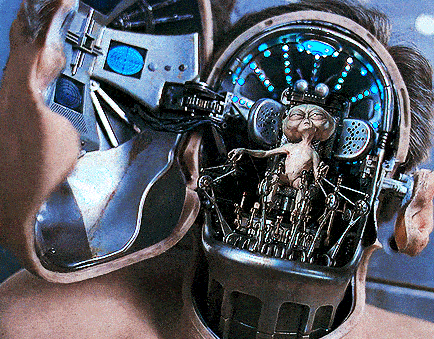
From a Jungian lens, this occurrence is ripe for interpretation. The select words I heard could be considered as manifestations of archetypes, elemental mental images inherited from our earliest human ancestors. The notion of “letting go” is an archetype in itself, symbolizing surrender, acceptance, and the death of the ego. In Jungian theory, letting go would signify confronting the Shadow, embracing it, and then transcending it, thus moving closer to individuation or psychological wholeness.
Another intriguing aspect of this moment was how “letting go” became the overriding message amidst a sea of verbal distortion. It felt like a symbolic representation of how our psyche filters out excess information to focus on what’s truly vital for our inner growth. In the broader spectrum of life, isn’t that often what we have to do? Sift through the noise to find our truth?
Moreover, My irritation at the ‘mundane chatter’ served as a mirror, reflecting back at me the superficiality I’ve outgrown but haven’t completely integrated or acknowledged. In Jungian terms, this isn’t just an annoyance but a Shadow projection, pointing to past elements of myself I need to confront to move closer to individuation. As I became more aware of this, I gained a new appreciation for the balance and intricacies of human existence, — accepting that every interaction with people, no matter how superficial, has its role in the grand scheme of things.
While reflecting on the experience, it dawned on me that the shaman and other participant’s conversation might have lasted only 20 seconds in real time. However, the state of consciousness I was in elongated those precious seconds, making me feel that Mother Ayahuasca was selectively allowing me to understand the true power of those specific words. This dilated perception of time is another element in Jung’s framework, where the collective unconscious transcends not only space but also time.
Finally, as I was guided back to my normal state, the shaman’s use of nature’s elements — plants and oils — served as an alchemic process of transformation, akin to the last stages of individuation in Jungian theory where one integrates all aspects of the unconscious into the conscious self.
In sum, the experience left me with an intricate tapestry of insights that seemed almost orchestrated for my personal transformation. Whether guided by an unseen force or the result of my subconscious rising to the surface, the archetypal message of “letting go” resonated profoundly, pointing me toward greater understanding and wholeness, much like the journey towards individuation that Carl Jung often described.
Conclusion
While we often look for rational explanations for the unexplained, what if the whole point is that this experience serves as a catalyst for personal growth? Whether UFOs are ‘real’ in a scientific sense is perhaps less important, just like they were to me during my ayahuasca journey. It seems to me, it might just be less about the phenomena themselves and more about the questions they provoke and the exploration of understanding they initiate.
My most striking revelation was the experience of ego death and subsequent rebirth. It’s one thing to intellectually understand the concept, but it’s another to face the terrifying existential void firsthand. This confrontation, this wrestling with inner demons, allowed a new version of myself to emerge. But it’s in this surrender, this grappling with my inner fears, that a new self emerged. I felt disassembled and then thoughtfully reassembled, piece by piece. Jung would describe this transformative process as a form of ‘integration,’ a crucial phase in the journey toward individuation where previously conflicting elements of the self come into harmony.

This rebirth was far from a solitary experience; it was as if a host of archetypes guided me through my own Hero’s Journey. From confronting my Shadow, symbolizing the aspects of myself I’d rather not acknowledge, to heeding the wisdom of the Anima as the Wise Old Woman, to embodying the Protector and ultimately surrendering to the Self — each archetype acted as a milestone on this path toward a more authentic self. The ultimate lesson, an alarming call to authenticity, echoed through every stage. Jung might frame this as my unconscious mind striving to reconcile with my conscious awareness, in a relentless pursuit of individuation.
In a world that often feels fragmented, this journey highlighted the perennial wisdom found in Taoist teachings, Jungian psychology, and Campbell’s Hero’s Journey: our external reality is a mirror reflecting our internal complexities. By recognizing this, we don’t just set the stage for personal evolution but contribute to a collective evolution of consciousness. It’s not just about “me” or “you,” but about the harmonious “us.”
Ayahuasca is an extraordinary ceremonial act, steeped in ancient wisdom and deserving of the utmost respect. It’s not simply about seeking the experience, rather, it’s about being called to it for the right reasons. It’s not for the faint of heart either, as my experience attests to. Its impact has taken me years to unpack, revealing its layers through reflection and continuous learning.
Life is filled with challenges pushing us toward growth. I’m far from having all the answers or achieving a state of enlightenment. Yet, the frameworks we adopt — be it therapy, meditation, or the wisdom of those we choose to accompany us — act as our navigational instruments, steering us through unknown territories and the unknown.
Would you take the journey again? Or perhaps the better question is: Are you ready for what the journey continuously asks of you?
—Adapted from LeeWay: Emerging Through the Modern Hero's Journey, where this experience and its integration are explored in full.
GET THE BOOKS ↓

